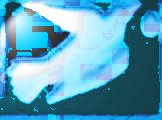
Experiment and Hypothesis...Critic and Doubt in Art Making.
|
NARCISSUS GUIDE
Experiment and Hypothesis...Critic and Doubt in Art Making.
|
VIII
Experiment and Hypothesis...Critic and Doubt in Art Making.
If we artists are going to amplify the horizons of our understanding of art, as well our
creation of it, we must establish by using thousands of years of experience from all periods
in history -that our main rule to get any kind of beauty done -is based on INTUITION, experiment
and hypothesis. Neither certainty nor formula are patterns to follow. For there is no logical
rule by which to do a good painting but historical(hysterical?) models in which careful
observation can help us improve the processes in the making of a new art. Those models were
completely successful in their times (i.e. Perspective Italian Theory): Could you conceive
Leonardo or even Michelangelo with no perspective?; Impressionism without any theory of
light?9.
Could you conceive Dali without Freud?(10).
If the "Thematic hypothesis is precisely built as a bridge over the gap of ignorance" as Harry
Woolf writes, ergo we artists have in the very way science behaves, a model to follow, at least
in the way scientists ask, "How can we build up an understanding of the regularities of nature
upon the consideration of pure number?". Likely from critic and doubt that statement by Niels
Bohr reminds us that the same "old method of perceiving correspondences between certain
observations and the predictions that follow"(11).
in the making of art, has been our unwritten golden rule through the ages!.
In the drafting of new processes for a hypertext aesthetics, it seems we are too cautious
applying a causal thinking to the experience of the arts, just to explain ourselves, the most
extraordinary heuristic of phenomena. And yet those complexity processes about linear and non
linear phenomena may easily perform as paralleled metaphores with metacomplex visuality, though
that is the reality of our complex nature.
Will they govern a new behavior of aesthetics?...complex art is a working out with its most
natural wonder, this new realm of transitions of bipolar, triad-tetrad polar relationships and
analogies, continuities and discontinuities, as well non linear "resonating interval
spaces"!(12).
|
|
|

